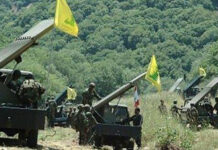
Forecasters had predicted that April 17, 1986, would be a cold, wet spring day in Pittsburgh. But by 9 p.m., the expected rain hadn’t materialized, and Neal (Nutti) Rosenblum HY”Ddecided to walk home from the Kollel Bais Yitzchok Torah Institute Study Center, turning down a fellow worshipper’s offer to give him a ride.
It was a decision that turned out to be fatal. Minutes after he’d left the center, the 24-year-old was shot five times on a street corner in Squirrel Hill, a tree-lined neighborhood of modest homes that on Saturday became the site of the deadliest attack on Jews in American history. More than three decades before a gunman opened fire at the Tree of Life synagogue, killing 11 people, Rosenblum’s death served a tragic reminder that even the heart of Pittsburgh’s Jewish community could be the site of an anti-Semitic attack.
“[Neal] Rosenblum died because of his religion,” District Attorney Stephen A. Zappala Jr. said in September 2002, when Steven M. Tielsch, a convicted drug dealer with a swastika tattoo, was found guilty of the murder.
Rosenblum, a visitor from Toronto who had arrived in Pittsburgh just seven hours before he was shot, was dressed in traditional Orthodox Jewish clothing when he was killed. “All of us immediately assumed [ . . .] that he was singled out simply for being Jewish,” Tree of Life Rabbi Alvin Berkun recalled in a 2000 interview with the Pittsburgh Post-Gazette. “When something like this happens, something that defies any kind of logic and reason, it shakes a community to its core.”
A rabbinical student who was also a trained computer programmer, Rosenblum had traveled to Pittsburgh with his wife and 1-month-old daughter so they could visit his wife’s family for Passover, the Jewish Telegraphic Agency reported. On that April night, he was headed in the direction of his in-laws’ home, wearing a black yarmulke, black suit, white shirt, and long black raincoat. Then, just moments after he had left the study center, shots rang out. Five bullets hit Rosenblum in the abdomen, chest, arms and leg. Shortly before he was taken to the hospital, he told police that a white man in a black sports car had asked him for directions, then fired when he approached the car. He died the following morning at around 1:15 a.m. while undergoing surgery, the Pittsburgh Press reported.
Like the events of Saturday, Rosenblum’s murder led to both widespread anxiety and spontaneous gestures of support in Squirrel Hill, which has been the center of Jewish life in Pittsburgh since the 1920s. In the days following the attack, Jewish community leaders warned their congregations to walk in groups if they had to walk at all, and met with local police to express concerns that Rosenblum might have been targeted because of his beard and Orthodox Jewish dress. Meanwhile, members of less Conservative synagogues joined the Kollel Bais study center for Sabbath prayers that weekend in a demonstration of solidarity.
After Saturday’s massacre, the alleged shooter told a SWAT officer, “I just want to kill Jews.” But in 1986, what had motivated Rosenblum’s slaying was less transparent, since his killer had fled.
Three days after his death, the Post-Gazette reported that police had been unable to find a motive for the murder. “We have no evidence to suggest that this was a terrorist hit, but we are not ruling out the fact that this man was killed because he was Jewish,” Pittsburgh Police Lt. William Mullen told the paper. That same day, several of Rosenblum’s family members, who declined to give their names, told the Press that they had initially believed the killing was an act of anti-Semitism but had come to believe that it was a hit job gone wrong.
“It is always in the back of the mind that this was anti-Semitic reaction,” Moshe Friedman, then an executive vice president at the rabbinical college in Toronto where Rosenblum had been a student, told the Press. “But it could also be someone on drugs or someone who kills for kicks. It couldn’t be personal. He didn’t live there. It’s just senseless.”
For 16 years, Rosenblum’s murder remained unsolved. In 1988, a jailhouse informant had told police that his cellmate, Tielsch, had admitted to shooting Rosenblum. But it wasn’t until 2000 that detectives found a second witness who corroborated the informant’s account. Tielsch, who had originally been jailed after pleading guilty to drug-trafficking charges, was arrested and charged with murder that year.
The original informant testified in court that Tielsch routinely drew swastikas on his forehead and made anti-Semitic remarks when they shared a cell. Prosecutors described the slaying as a hate crime, and police said they had always had a gut feeling that was the case. But three trials over two years ended in a deadlock. “[T]he time lapse, the credibility of the star witness and a plethora of unsavory characters as witnesses made it difficult for prosecutors to persuade juries to convict Tielsch,” the Pittsburgh Post Gazette wrote.
Although Tielsch had a swastika tattooed on his leg, his attorney successfully argued there was no evidence that Tielsch had the tattoo in 1986, and Allegheny County Judge Lawrence J. O’Toole ruled that prosecutors couldn’t mention it to jurors during the fourth and final trial, which began in January 2001. Nevertheless, a jury found Tielsch guilty of third-degree murder in September 2002, and he was sentenced to 10 to 20 years in prison.
“We’re grateful that it’s over,” Penina Rosenblum, Neal Rosenblum’s mother, told the Post-Gazette. “We’re just happy that justice was done.”
Tielsch, who has continually maintained that he did not kill Rosenblum, appealed his conviction. In 2008, the U.S. Supreme Court refused to hear his case. Federal Bureau of Prison records show that he was released on Oct. 23, 2017.
Over the weekend, some residents of Squirrel Hill told The Washington Post and other media outlets that the neighborhood had been a place where Jews always felt safe – at least before Saturday. But others who recalled Rosenblum’s untimely death found themselves reflecting on the parallels.
“It was unsettling, but somehow I don’t recall that there was a sense that it was part of a larger phenomenon, that it was going to reflect a wave,” Barbara Burstin, a history professor at the University of Pittsburgh, told the Associated Press. ”It didn’t seem to be representative of a larger phenomenon, but now it definitely does.”
(c) 2018, The Washington Post · Antonia Noori Farzan
{matzav.com}












Nutti Rosenblum, HYD.
Please honor Nutti Rosenblum’s memory accurately! He was a member of a refined, Torah-dik family, learning in Toronto’s Ner Yisrael yeshivah. He traveled to Pittsburgh for a family visit. His murder was seen by a man walking his dog, far enough away that all he could see was Nutti approaching a black car, and then being shot at. Earlier that day, there had been a Jewish funeral, and the first car that stopped for the procession outside the funeral home, was a black Ferrari (I’m not sure), and the driver expressed his anger to the funeral worker halting the traffic. He said he would kill the Jews. For years no one put the details together and I always wondered if justice had been served. With all the sorrow at the loss of someone with such fine middos, there is a certain comfort in the knowledge that he was caught, though 10-20 years is nowhere near enough. May Hashem send comfort to his family, and those of the newest victims of anti Antisemitism. ה’ יקום דמם
What ever happened with the case of the bachur learning in Long Beach that was found murdered? Did they ever catch the killer?
cover up?
I heard that they solved the murder and much more. The proceuter went on vacation and then the case fall apart.
Nobody was ever arrested for the Long Beach murder. The cover up was successful.
Nutti was a Tzaddik!
He was the first person I thought about when I heard this happened in Squirrel Hill.
HYD